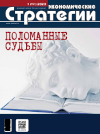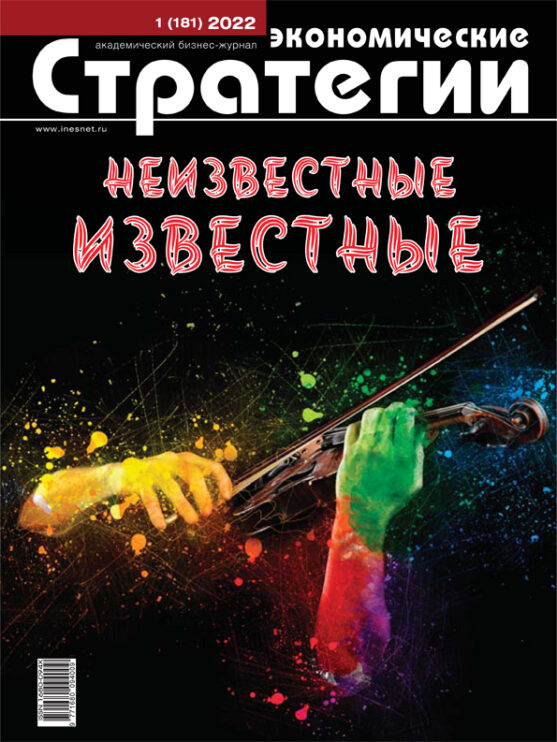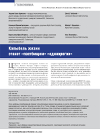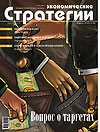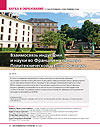Strategy for Step-by-step Expansion of Digital Engineering System Tools with Artificial Intelligence
DOI: 10.33917/es-3.195.2024.68-79
This work continues to examine the model-oriented system engineering [1–3] and at the same time presents an approach based on streamlining and sequentially complex complementing of MBSE formats according to the principle “from simpler to more complex” with the subsequent study of the possibility to include the considered modeling formats in tool platforms of digital engineering. The main focus is made on the systematic orderliness and logic of the approach presentation, with the understanding that in the subject area there is a wide range of divergent definitions (the well-known effect of the language of the Tower of Babel builders).
References:
1. Kondrat’ev V.V. Model’no-orientirovannyy sistemnyy inzhiniring 2.0 [Model-Based Systems Engineering 2.0]. Moscow, MF TI, 2021.
2. Garichev S.N., Gorbachev R.A., Davydenko E.V., Dzhaparov B.A., Kondrat’ev V.V. Model’no-orientirovannyy inzhiniring fiziko-tekhnicheskikh, informatsionnykh i intellektual’nykh system [Model-Based Engineering of Physical, Technical, Information and Intelligent Systems]. Trudy MFTI, 2022, vol.
14, no 2.
3. Kondrat’ev V.V., Tishchenko E.B. Arkhitekturnyy inzhiniring gibridnykh modeley, vklyuchayushchikh tsifrovye dvoyniki i mashinnoe obuchenie [Architectural Engineering of Hybrid Models Incorporating Digital Twins and Machine Learning]. Ekonomicheskie strategii, 2023, no 5(191), pp. 94–99, DOI:
10.33917/es-5.191.2023.94-99
4. Semin A.N., Tishchenko E.B., Kislitskiy M.M., Kurdyumov A.V. Razvitie metodologicheskikh polozheniy proektnogo upravleniya v sfere obespecheniya tekhnologicheskogo suvereniteta APK [Development of Methodological Provisions of Project Management in the Field of Ensuring Technological Sovereignty of the Agro-Industrial Complex]. Fundamental’nye i prikladnye issledovaniya kooperativnogo sektora ekonomiki, 2022, no 4, pp. 3–10.
5. Kondrat’ev V.V., Lorents V.Ya. Daesh’ inzhiniring! [Give me Engineering!]. Moscow, Eksmo, 2007 (Navigator dlya professionala).
6. Romanov A.A. Prikladnoy sistemnyy inzhiniring [Applied Systems Engineering]. Moscow, FIZMATLIT, 2015.
7. Borovkov A.I., Burdakov S.F., Klyavin O.I., Mel’nikova M.P., Mikhaylov A.A., Nemov A.S., Pal’mov V.A., Silina E.N. Komp’yuternyy inzhiniring [Computer Engineering]. Ucheb. posobie. Saint Petersburg, Izd-vo Politekhn. un-ta, 2012.
8. Potyupkin A.Yu., Chechkin A.V. Iskusstvennyy intellekt. Na baze informatsionno-sistemnoy izbytochnosti [Artificial Intelligence. Based on Information System Redundancy]. Moscow, Kurs, 2022.
9. Organizatsionnyy dizayn. Resheniya dlya korporatsiy, kompaniy, predpriyatiy: Mul’timediynoe uchebnoe posobie + Praktikum na CD-R [Organizational Design. Solutions for Corporations, Companies, Enterprises: Multimedia Textbook + Workshop on CD-R]. Pod red. V.V. Kondrat’eva. Moscow, INFRA-M, 2018 (Upravlenie proizvodstvom).
10. ArchiMate. Vikipediya, available at: https://ru.wikipedia.org/
11. Generativnyy iskusstvennyy intellekt [Generative Artificial Intelligence]. Vikipediya. URL: https://ru.wikipedia.org/




